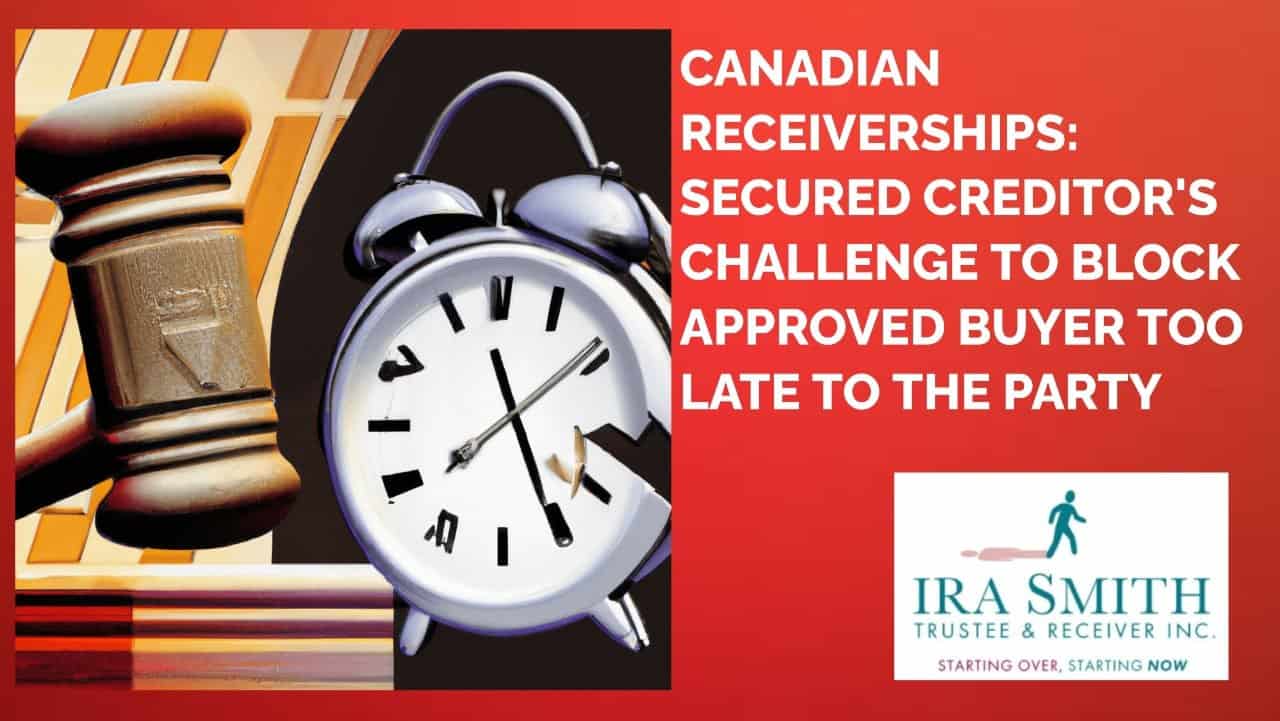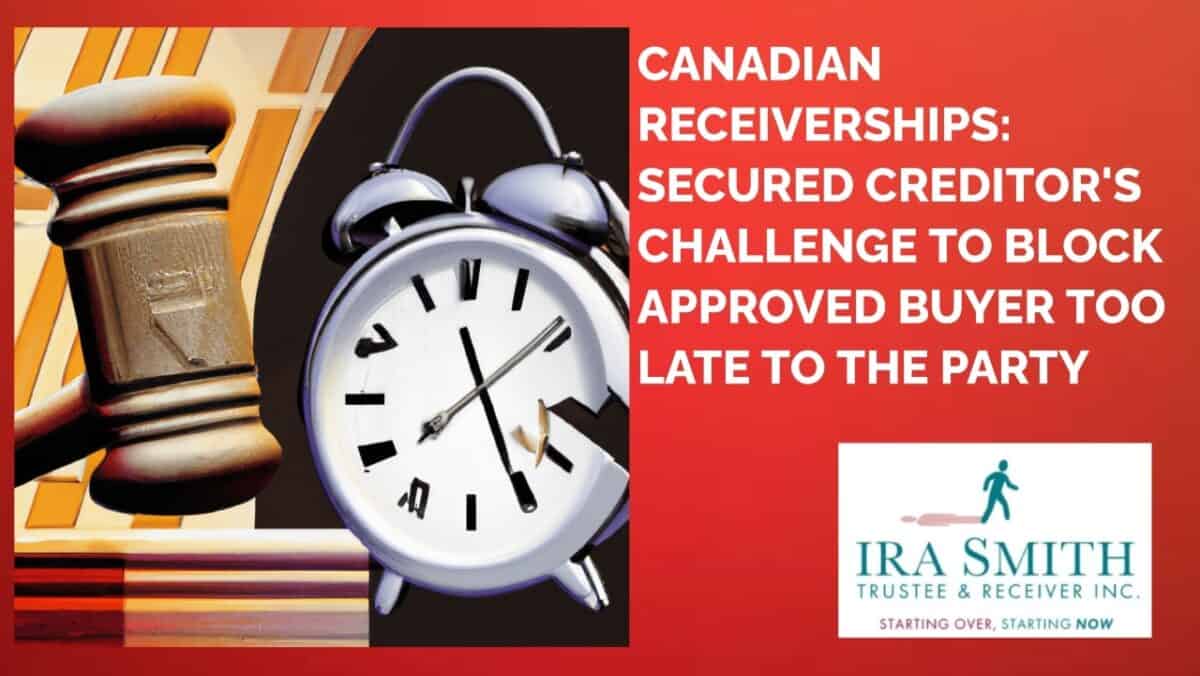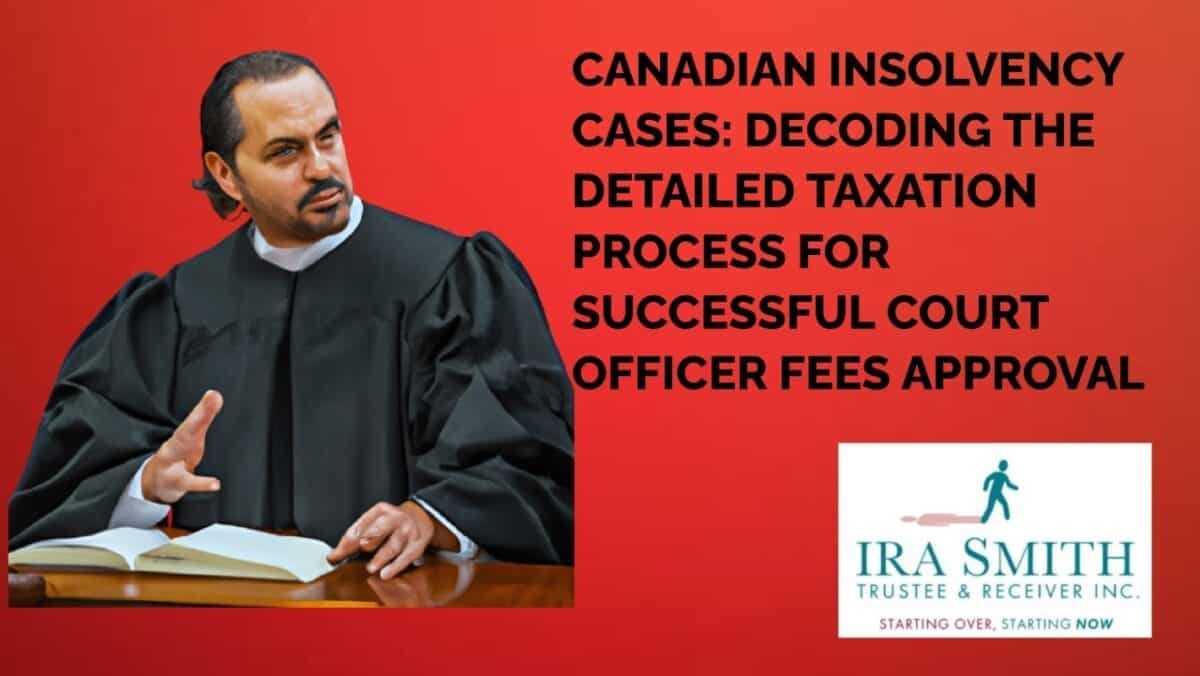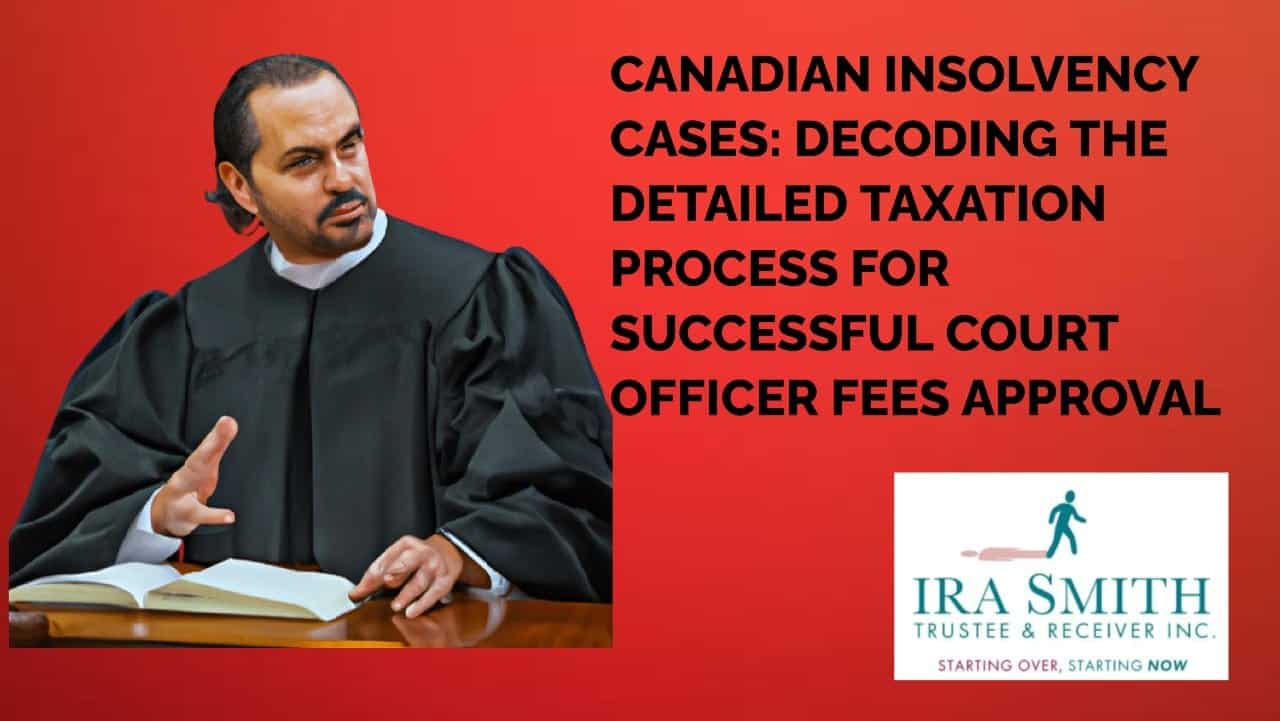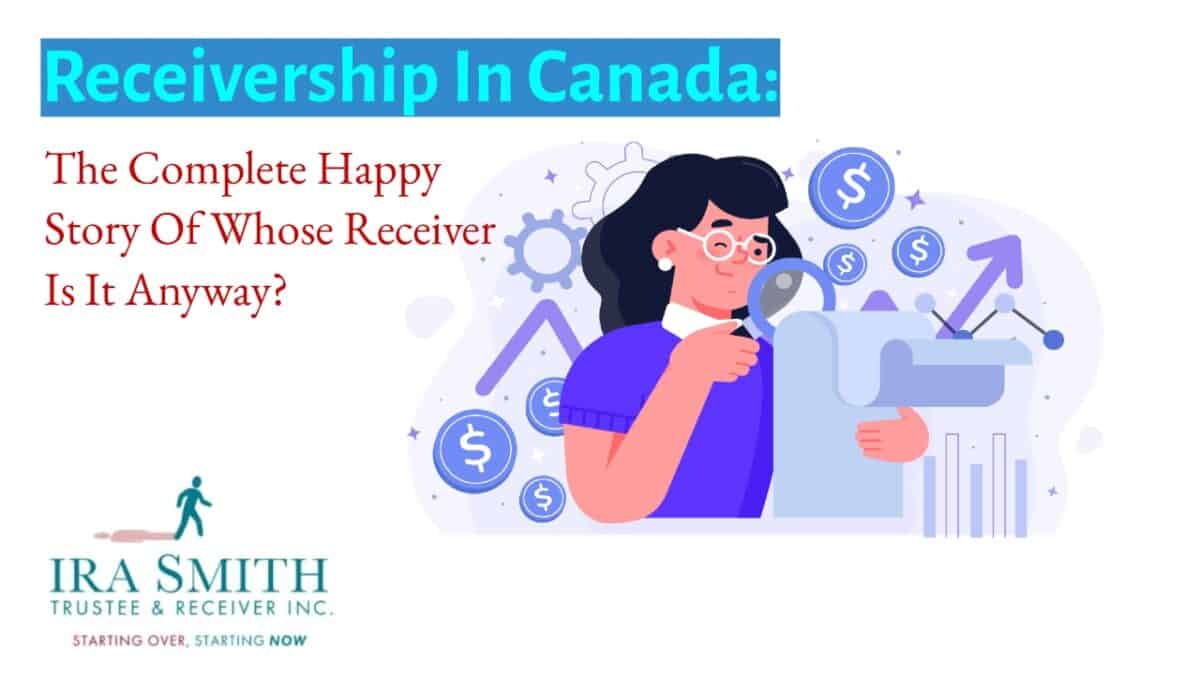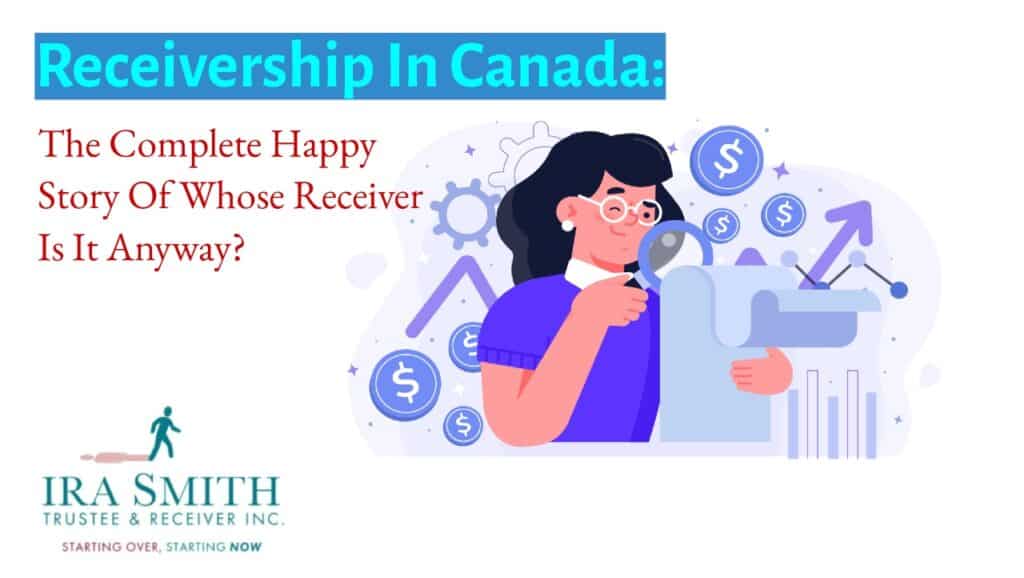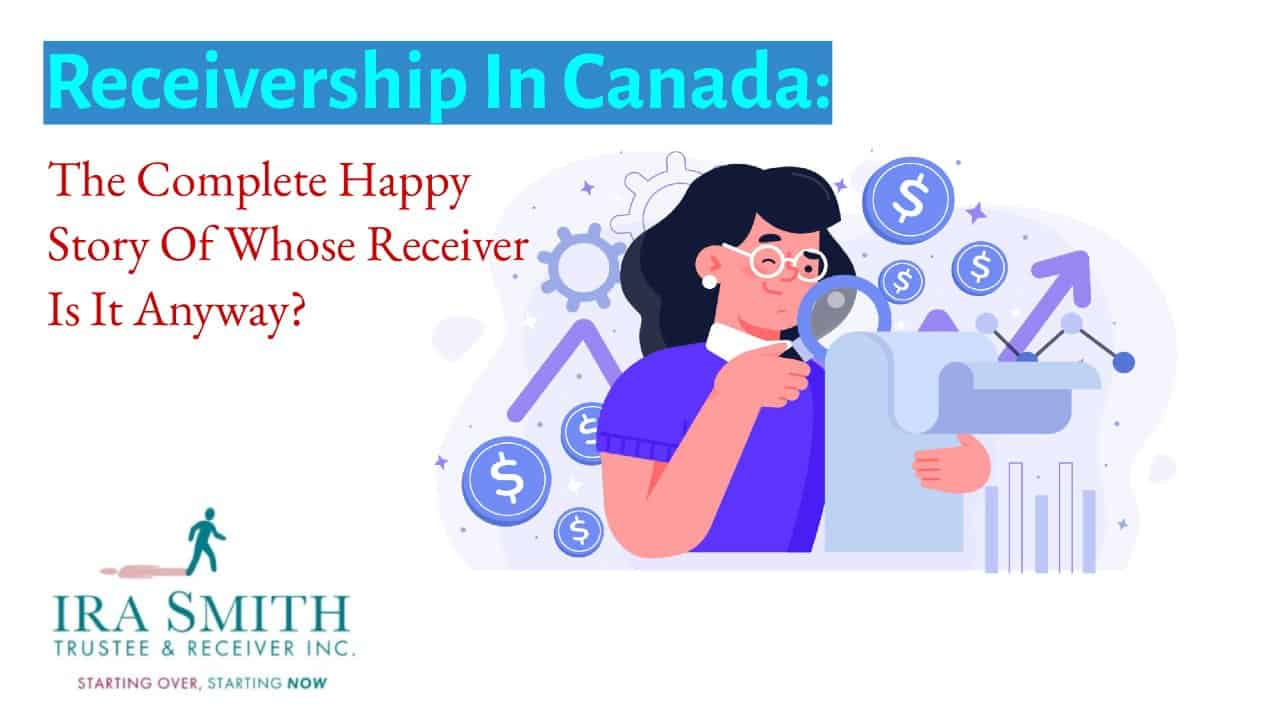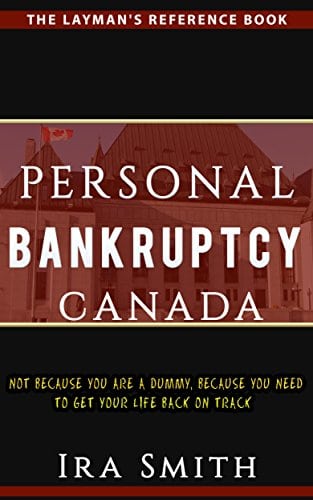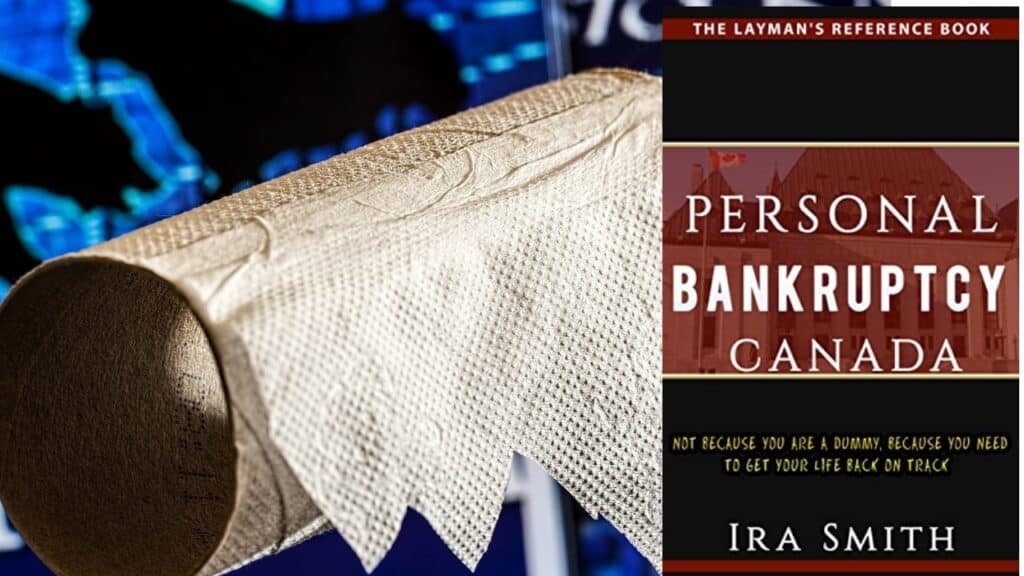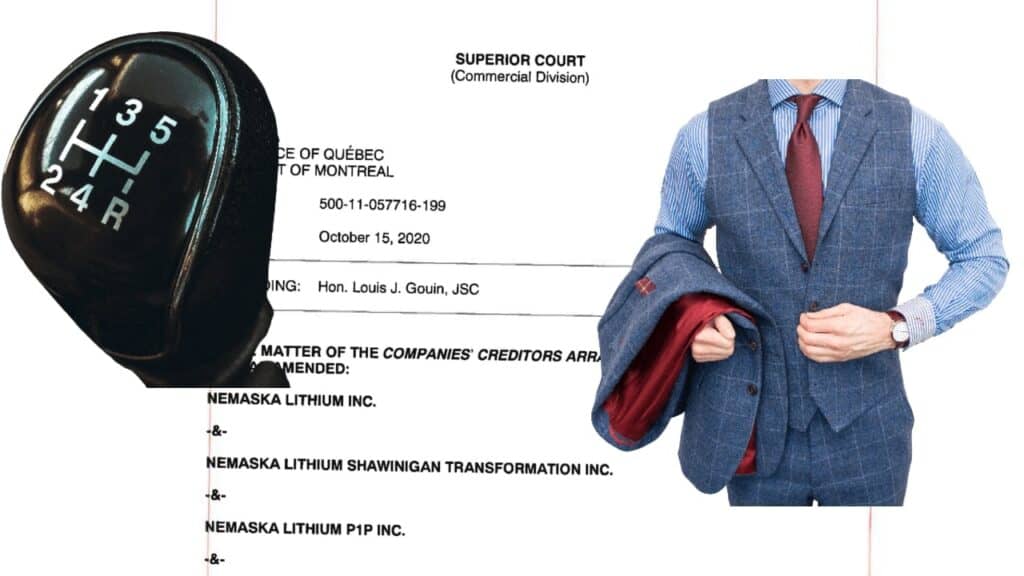Receiverships introduction
Step into this week’s edition of Brandon’s Blog! Our topic this week explains the complicated landscape of Canadian receiverships. Our journey into a world where secured lenders sometimes grapple with their unhappiness with a receiver’s recommendation for a certain court-sanctioned buyer, wanting to buy the holdings of an insolvent enterprise.
Simplifying your journey, I shall use a recent, tangible case study to unveil how secured creditors can endeavour to wield influence in court-supervised receiverships. I will deconstruct the technical terms and explain every nuance in a manner that you will easily understand.
Canadian receiverships are a pursuit of balance, entwined with the rightful entitlements of secured creditors through the prism of procedural clarity and the scales of impartiality, as demanded by the court in the realm of Canadian receiverships.
Understanding Canadian receiverships and approved buyers
What is a receivership and how does it function in Canada’s legal framework?
Within the legal landscape of Canada encompassing matters of commercial contention, there is the intricate notion of receivership. This process entails the designation of one of the two types of receivers; either a privately-appointed receiver or a court-appointed receiver. A receiver is vested with the authority to assume dominion over a business’s array of assets and properties. This authority arises from situations of monetary default on their secured loans.
It is prudent to retain awareness that the role of a receiver can only be filled by a licensed trustee for assuming the mantle of a receiver within the confines of Canada’s legal expanse.
The fulcrum upon which the inception of the receivership mechanism pivots is usually the inability of secured creditors to recoup their financial outlay from a debtor, who in turn is incapacitated in discharging its pecuniary obligations.
The receiver becomes vested with the possession and control of the assets, affects their liquidation, and subsequently allocates the ensuing sale proceeds among the cadre of creditors within the hierarchy delineated by the legal ladder of priority of claims.
As an instrumental constituent of the commercial legal architecture in Canada, the receivership process endeavours to safeguard the vested interests of both creditors and debtors. It offers creditors the avenue to recoup either the entirety or a portion of their outstanding amounts due.
Concurrently, beleaguered commercial entities are afforded the prospect of either orchestrating a financial reconfiguration that extricates them from the quagmire of their fiscal problems or alternatively, facilitating the divestiture of assets with the aspiration of facilitating the uninterrupted continuity of the business, but under new ownership. It, therefore, emerges as an indispensable instrument within the gamut of the Canadian legal paradigm, upholding the equilibrium of economic constancy.
Who is an approved buyer in the context of a receivership sale?
In the detailed context of a receivership sale, an approved buyer describes an individual or entity that has effectively met the specific requirements stated by the designated receiver. These standards encompass a variety of variables, including financial disclosure, a shown understanding of the sale’s terms and conditions, and the tried and tested capacity to finalize the purchase quickly. Usually, the recognition of an approved buyer takes place within a defined bidding procedure, in which potential purchasers compete to meet these developed requirements.
Once identified, an approved buyer ends up being subject to the terms and terms laid out within the sale arrangement. It is the receiver’s responsibility to ensure that the sale is carried out with a commitment to fairness and transparency. This consists of the duty to pick an approved buyer who not only has the capacity to efficiently wrap up the transaction but also has the ability to enhance the overall value of the assets that are being sold.
The fiduciary responsibility of the receiver is paramount throughout this process. The receiver is obliged to act in the very best interests of all parties, which encompasses lenders and other stakeholders. For that reason, the receiver’s duty surpasses the simple identification of an approved buyer; it includes securing the integrity of the sale, guaranteeing fairness for all parties, and ultimately maximizing the value that can stem from the assets being sold within the context of the receivership.

The role of secured creditors and their rights in receiverships
In the world of Canadian receiverships, secured creditors play an essential function in identifying the destiny of troubled companies. Recognizing their rights is essential in going through this complex landscape. Secured creditors have the legal authority to take enforcement proceedings against the assets covered by their security and have a higher priority in payment contrasted to unsecured creditors. They can either privately appoint or apply to the court for the appointment of a receiver.
The court-appointed receiver acts as a neutral party in charge of taking care of and selling the assets. The secured lenders have the right to challenge court-approved buyers if they think the receivership sale process is unfair or if they have a better deal. Nonetheless, safeguarding their legal rights within receiverships calls for a detailed understanding of the legal complexities and efficient timing associated with receiverships.
A secured creditor plays a crucial duty in the sale process. As the main financial stakeholder given their claim against the secured assets, the secured creditor has a vested interest in the end result of the sale procedure. The court-appointed sale procedure includes the marketing and sale of the debtor’s assets and properties, which inevitably establishes the amount of funds that will be available to pay over against the secured debt.
For that reason, the secured lender has a significant interest in guaranteeing that the sale procedure is conducted in a way that optimizes the recuperation of funds. The secured creditor’s beneficial interest in the sale procedure is shown in their capability to approve or reject the sale of assets in a private appointment and carries a level of weight with the court for a court-approved sale. This power allows them to protect their economic interests and ensure the very best feasible result from the sale process.
The timelines and stages of a receivership sale: The role of the approved buyer in Canadian receiverships
In Canadian receiverships, the role of the approved buyer is essential to the successful outcome of a receivership. In a court-appointed receivership, approved buyers are court-approved purchasers who typically offer the highest and most beneficial bid for the debtor company’s assets. They play a crucial role in maximizing the value of the distressed company and ensuring the best outcome for all parties involved. Their timely participation in the receivership process is instrumental in achieving sale finality and ultimately shaping the fate of the distressed entity.
In the world of Canadian receiverships, the involvement of court-approved buyers functions as a cornerstone in supporting an equitable and clear process. This essential process makes certain that every interested party has the possibility to take part in the bidding process for the assets being sold. The result of this bidding process finishes with the choice of the best overall bidder. This mechanism of operation is rooted in concepts of justness, striving to eliminate any type of unnecessary benefit that a solitary party might have over others.
When a company is placed into receivership, the assigned receiver assumes command over the assets as well as operational elements of the business. The purpose behind the orchestration of a receivership sale revolves around the liquidation of the firm’s holdings to get them out of the insolvent troubled company and into the hands of a buyer who can maximize their value. The timing and stages integral within receiverships have a level of fluidity depending upon the intricacy and complexity of the business’s operations and assets.
Generally, the receiver’s starting point is the meticulous groundwork and strategy in setting up the sale procedure. Typically, the initial stage involves the preparation and marketing of the sale of the assets. This is followed by the negotiation and acceptance of offers from interested parties. In court-appointed receiverships, once an offer is accepted, the sale is subject to court approval and then the transfer of ownership is completed.
As this complex process unravels, the receiver must follow rigid lawful as well as regulatory requirements, thereby promoting an environment of impartiality and transparency that emphasizes a fair sale process. In its totality, the underlying purpose of a receivership sale opens up as the optimization of the company’s asset values, a pursuit carried out in the service of all stakeholders’ well-being.

When is it too late for a secured creditor to challenge an approved buyer in Canadian receiverships?
Within the intricate realm of Canadian receiverships, those holding the mantle of secured creditors find themselves navigating through a myriad of intricate challenges, especially when confronted with the task of contesting a buyer approved by the court. The genesis of these challenges emerges from the imperative to harmonize the rights of stakeholders with the irrevocability of a sale.
Timing emerges as an eminent concern for any actions by creditors, as secured creditors must expeditiously interpose to thwart the endorsement of an approved buyer. Such a stance necessitates astute contemplation encompassing not only the exigencies of insolvency statutes but also the jurisprudential lineage of past cases, in tandem with an astute assimilation of the considerations that judiciaries deliberate upon while adjudging the legitimacy of an opposition. The effective surmounting of these multifaceted impediments serves as the crucible through which a secured creditor’s sway attains its zenith, eventually moulding the denouement of an entity’s restructuring endeavour.
In Canadian receiverships, it is very important for secured creditors to understand when it is far too late to challenge an accepted buyer. A secured creditor has the status of a major stakeholder to object to the sale of property by a receiver. However, this objection needs to be made within an appropriate timespan. Normally this would be on the receiver’s motion to approve a specific buyer under an agreement of purchase and sale to buy the company’s assets in receivership.
If the creditor stays silent at the hearing, after being served with the receiver’s motion record, or worse, consents to the relief the receiver is requesting, it will be near impossible to change the outcome. Also, if the secured creditor waits too long to appeal the court’s decision on the approval of the buyer, it may be too late to overturn the accepted buyer.
The courts normally take into consideration variables such as the timing of the objection, the factors for the opposition, as well as whether the creditor had knowledge of the receiver’s motion recommending the sale. Therefore, it is essential for secured creditors to act without delay as well as seek legal advice in receiverships to ensure their rights are preserved and protected.
The Role of Investment and Due Diligence by Approved Buyers in Canadian receiverships
When potential investors turn their gaze toward the prospects of allocating resources in assets emanating from Canadian receiverships, a paramount imperative takes center stage—none other than the meticulous practice of due diligence. Embarking on this voyage entails a profound plunge into the annals of financials, operational intricacies, assets, and liabilities of pivotal suppliers—a linchpin to the enterprise’s continuity. Moreover, a comprehensive appraisal of the corporate entity’s visage within the tapestry of market conditions unfurls before them—an intricate matrix to fathom.
This immersive exploration fosters an enriched cognizance of the assets that conflate to shape the enterprise’s essence and the latent perils entwined. Concurrently, an assessment of the enterprise’s fiscal robustness commences, bifurcating between the financial vitality of the business itself and the overarching corporate infrastructure. This evaluation, ranging from debt metrics and asset portfolios to revenue inflows and the embryonic promise of future profitability, unfurls a tapestry conducive to ascertaining a judicious valuation, commensurate with inherent realities.
The compass of scrutiny extends further to encompass the realm of legality and regulation—a vista often overlooked yet of paramount significance. Engaging in a bout of legal due diligence emerges as the prudent course, an endeavour aimed at unearthing dormant legal quandaries or impending obligations that might cast a pall over operational congruence or intrinsic valuation.
As the due diligence crescendo navigates onward, an avenue laden with promise unfurls—plummeting into the corridors of potential betterment and restructuring, the twin gateways to magnifying operational yield. This orchestration, calibrated to fortify profitability, occupies a pivotal niche within the mosaic of considerations.
In the vanguard of this multifaceted expedition looms the bastion of market research—an indispensable edifice buttressed by industry ebbs and flows, the throes of competitive dynamics, and the overarching symphony of market demand. The synthesis of these nuanced factors culminates in an orchestration of knowledge that infuses sagacity into investment choices, ensuring an informed voyage into the tapestry of Canadian receiverships.
Within the realms of court-overseen receiverships in the Canadian context, the focal point unfailingly revolves around the paramount virtue of transparency. The bedrock of establishing confidence and credibility in the transaction resides in a meticulous and exhaustive due diligence endeavour. This endeavour, in its multifaceted essence, serves the dual purpose of ensuring equitability in pricing, commensurate with the genuine valuation of the assets on offer—an aspect that assumes cardinal significance for all stakeholders vested in the proceedings.
Furthermore, the inclusion of endorsed purchasers injects a paradigm of impartiality and impartiality into the entire procedural tapestry. Let us not be remiss in accounting for the aspect of legal conformity—a facet woven intricately into the fabric of this process. Said purchasers are vested with the task of scrutinizing potential legal conundrums, thereby preempting any semblance of post-sale imbroglio. An additional boon surfaces in the form of expedited procedural swiftness—a byproduct of the exhaustive due diligence undertaken.
Essentially, the realm of Canadian court-supervised receiverships beckons our attention to several pivotal considerations. First, and foremost, lies the meticulous endeavour undertaken by prospective buyers, involving an intricate choreography of research and analysis preceding their bids. This diligent preliminary inquiry manifests as a testament to their authenticity and competence, encapsulating an acute grasp of their enterprise. This facet’s significance stems from the heightened assurance it instills across the spectrum of participants, nurturing faith in their aptitude to consummate the transaction while adroitly managing the assets set to come under their aegis.
Segueing onwards, the confluence of comprehensive insights gleaned through rigorous due diligence serves as a compass directing prospective purchasers toward sagacious choices. These choices burgeon from the assimilation of manifold data points, sculpting a strategy to mitigate perils and optimize trajectories—calibrating the optimal approach for the assets earmarked for takeover. Additionally, negotiations unfurl as a canvas, where a nuanced comprehension of the distressed entity’s predicament acts as the brushstroke guiding buyers toward terms consonant with their aspirations. Simultaneously, the custodian of the proceedings—embodied by the receiver—meticulously orchestrates a harmonious equilibrium, ensuring equity persists as a recurring motif, safeguarding the interests of all implicated parties.
Collectively, the crux of the matter revolves around sanctioned buyers channelling their energies into a judicious exploration, culminating in a discerning investment stance. This virtuous circle of scrutiny and prudence furnishes a bastion of probity, where parity prevails and stakeholders’ interests find refuge within the tapestry of these exigent corporate circumstances. The intricate interplay of variables emboldens distressed entities’ myriad stakeholders, engendering optimism for recuperation within the contours of an intricate, multifaceted milieu.

Legal precedents and case study
In the detailed tapestry of Canadian receiverships, the dissection of legal criterion and court decisions emerges as an essential core, important for the understanding of the detailed inflections that accompany the decisions of secured creditors in their search to overturn the approval of a purchaser. This case study, being a current decision of the Court of Appeal for Ontario, offers a fascinating look at the factors the appellate court takes into consideration when a secured creditor attempts to overturn a lower court decision on an accepted buyer and the approval of their offer to purchase assets from receiverships.
Scrutiny of cases bestows enlightenment rich with insights and strategies, unfurling before practitioners an intricate bouquet of knowledge encapsulating the symphony between legal principles and commercial actualities. Within this continuum, the equilibrium between safeguarding the prerogatives of creditors and the unalterable finality of an economic transaction assumes a role of pivotal prominence. By charting the trajectory of these paradigms, individuals of the legal craft glean invaluable insights that serve as compasses guiding their navigation within the intricate choreography of corporate metamorphosis.
The decision of the Court of Appeal for Ontario on August 21, 2023, I wish to discuss is Rose-Isli Corp. v. Smith, 2023 ONCA 548 (CanLII). It was on appeal from the order of The Honourable Madam Justice Kimmel of the Ontario Superior Court of Justice, dated February 2, 2023.
Overview of the case
Certain parties, including a secured creditor, appealed the authorization and vesting order released by the lower court judge that appointed the receiver and approved the sales process to be used to sell the property in receivership, in addition to a relevant ancillary order.
The appellants had actually initially sought the appointment of the receiver over the property. One of the applicants, 2735440 Ontario Inc. (“273 Ontario”), held a second mortgage on the real property. The order appointing the receiver contemplated 273 Ontario would certainly participate in a sales process for the property. The receiver received court authorization for a sales procedure, performed that approved sales process, and then sought court approval of the recommended bid.
When the receiver came to court for approval of the buyer and the sales agreement, the appellants opposed the proposed sale and, rather, looked for an order that 273 Ontario could pay out the first mortgage or, be acknowledged as a successful creditor bidder. The court approved the receiver’s recommendations of who the buyer should be and approved the sale as well as dismissing the applicants’ cross‑motion to redeem the 1st mortgage. The appellants submitted that the motions judge made an error by issuing the order that she did.
At the time of the issuance of the appointment order, the judge who issued the appointment order described the lay of the land at the time the applicants asked for the appointment of a receiver. That judge said that the relationship between and amongst the parties had irrevocably broken down. The evidence for that was the receivership application itself. That judge kept in mind that one way or the other, all stakeholders that day agreed that the Rosehill condo real estate project should be sold and that the sale process needed to be done by a court-appointed officer.
The appellants proclaimed that the lower court judge had made an error in not allowing the appellant’s cross-motion. They submitted that as the second mortgagee, they held the right to redeem the first mortgage at any conceivable juncture, even in the face of the implementation of a carefully run court-sanctioned sales procedure and the request for the approval of a sale to the approved buyer.
The appellate court analysis
273 Ontario, as one of the applicants seeking the appointment of a receiver, extended their consent to the issuance of the Appointment Order. Paragraph 9 of the Appointment Order made it clear that the entitlement of any kind of encumbrancer to effectuate the redemption of a mortgage pertaining to the property was now trapped under the jurisdiction of the appointed receiver.
Within that section was the affirmation that all privileges as well as remedies against the project or its assets or the receiver, or that impact the property, are currently kept in abeyance and suspended, unless the receiver concurred with the proposed action, in writing, or if the court made such an order.
The appellate court found that the motions judge deliberately acknowledged that the subject for adjudication did not orbit around whether 273 Ontario had a legitimate claim for redemption, yet instead, she focused on the much more practical query as to whether 273 Ontario ought to be given the authority to implement that preserved benefit once the process of court-sanctioned sales process had been carried out and the receiver coming to court seeking the approval of the sale of assets under that process. After all, the sales process carried out by the receiver followed the Appointment Order requested by the applicants, which included 273 Ontario.
The Court of Appeal found this to be an astute reframing of the concern and made certain that the heart of the matter was aptly described: (i) the appellants had requested for the appointment of the receiver; (ii) the receiver, in accordance with the approval of the court, had undertaken a methodical sales procedure; and (iii) most importantly, the period of the Receiver had yet to be discharged.
Therefore, the vital scope of 273 Ontario’s ability to obtain court authority to redeem the 1st mortgage was undoubtedly coloured by the plain reality that the property stayed within continuous control under an active receivership. The court supervising the receivership and the sales process status was beyond the redemption rights of the 2nd mortgagee.
The Court of Appeal for Ontario said that, when confronted with the petition of an encumbrancer looking to redeem a mortgage on a property in receivership, the court has to meticulously ponder upon the far-reaching repercussions that might unfurl should the encumbrancer be allowed to exercise its right of redemption.
This philosophy extends to incorporate any kind of and all stakeholders who have purposes of disrupting a court-sanctioned sale process, that has been properly performed by the receiver, all while bearing in mind the prospective purchaser who followed all the rules and waits to complete the acquisition. This principle is not restricted only to a mortgage redemption; it is a guiding beacon for any kind of stakeholder who attempts to disrupt a properly performed court-approved sales process.
The Court of Appeal for Ontario said that the following principles must be adhered to:
- Usually, if a court-approved sales process has been carried out in a manner consistent with the principles set out in Royal Bank of Canada v. Soundair Corp., (1991), 1991 CanLII 2727 (ON CA), 4 O.R. (3d) 1 (C.A.), a court should not allow a subsequent endeavour to redeem to disrupt the consummation of the properly carried out sales process. From its perspective, the appellate court stated the rationale behind the Soundair principles applies in scenarios wherein an encumbrancer aspires to redeem a mortgage. Once the judicial machinery has been set in motion to oversee the sale of assets controlled within the confines of a receivership, that process must be allowed to play out. The court’s supervision of receiverships will give due regard to the intricate web of economic interests intertwined with the assets under the receiver’s control. In court-supervised receiverships, it is no longer the exclusive purview of a single creditor, but rather the collective interests of all economic stakeholders, that must be considered in this court-supervised process.
- When addressing this issue, judicial deliberation should embark on a meticulous journey of ensuring balance. The court must delicately weigh the sacrosanct right to redemption against its potential repercussions of blemishing a fair, unbiased and transparent court-sanctioned receivership procedure.
- A mockery would be made of the practice and procedures relating to receivership sales if redemption were permitted at that stage of the proceedings. A receiver would spend time and money securing an agreement of purchase and sale that was, as is commonplace, subject to Court approval, and for the benefit of all stakeholders, only for there to be a redemption by a mortgagee at the last minute. This could act as a potential chill on securing the best offer and be to the detriment of stakeholders.
The Court of Appeal for Ontario makes its decision
The Court of Appeal held that the appellants repeated the numerous complaints they made in the lower court about the lack of fairness in the sales process. The motions judge canvassed those complaints in considerable detail and found no merit in any of them. Her conclusion that the conduct of the sales process met the Soundair criteria was reasonable and free of palpable and overriding error, anchored as it was in the specific evidence before her.
Finally, the appellate court found no reversible error in the motions judge’s conclusion that the balance favoured protecting the integrity of the sales process over 273 Ontario’s request to redeem. The appeal was denied.

Factors considered by courts in evaluating the timing of secured creditor’s challenge: Balancing creditor rights and sale finality
In evaluating the timing of a secured creditor’s challenge to block an approved buyer in Canadian receiverships, courts consider several factors. Firstly, they assess whether the creditor had sufficient notice and opportunity to challenge the sale. Timing is crucial, as courts look at whether the challenge was brought promptly and diligently.
Additionally, courts evaluate the potential impact on the sale process, including the harm to other stakeholders and the feasibility of an alternative solution. The creditor’s reasons and supporting evidence for the challenge are also scrutinized. Overall, the courts aim to balance the interests of the creditor with the need for finality and the preservation of the distressed company’s value.
Strategies for secured creditors to maximize influence
Testing a court-approved buyer too late in Canadian receiverships carries substantial prospective repercussions for secured creditors. The timing of these challenges is a vital variable that can considerably influence the outcome.
Leading among the dangers is the prospective loss of the opportunity to challenge the sale. Canadian courts value the finality of sales and receiverships while seeking to maximize the value of distressed company assets. Late legal challenges can interrupt this procedure and may not be viewed positively by the courts.
Secured lenders additionally risk forfeiting the chance to produce better offers or bargain for extra beneficial terms for themselves. Waiting too long to test an approved buyer can limit their capability to draw out the very best offer from the sale.
Additionally, late opposition can stain the integrity of secured creditors in the eyes of the court. This loss of reputation can have long-term consequences, potentially limiting their influence in future restructuring cases.
Secured creditors dealing with the intricate terrain of Canadian court-supervised receiverships, especially when opposing an approved buyer, are without a doubt confronted with an awesome challenge. To obtain the most favourable result for themselves, these creditors can carry out a variety of tactical techniques.
First and foremost, partnership emerges as a potent technique to reach an agreeable outcome. Secured lenders ought to take part in useful discussions with various other stakeholders and also the borrower, cultivating a joined front. This unity can significantly affect the selection of a receiver that understands their interests and intentions.
Moreover, direct engagement with the receiver is essential. By proactively participating in conversations with the receiver, secured creditors can make sure that their concerns and objectives are appropriately taken into consideration throughout the process. This interaction might also entail discovering different avenues, such as finding an approved buyer they support or offering financing to their preferred buyer, which can be advantageous in securing ideal end results.
A focus on detail cannot be underrated. Secured lenders should carefully inspect all essential documentation, leaving no rock unturned. Looking for experienced legal advice is critical to guarantee they are knowledgeable and supported to make sound decisions that will ideally safeguard their interests.
In summary, a mix of calculated planning, efficient interaction, as well as professional support is important for secured creditors seeking to navigate the elaborate landscape of court-supervised receiverships in Canada successfully. By embracing these approaches, they can boost their impact as well as maximize their opportunities to accomplish the most beneficial results.

Canadian receiverships conclusion
I hope you enjoyed this receiverships Brandon’s Blog where I explored the dynamic realm of Canadian receiverships as secured creditors navigate the race against time to challenge court-approved buyers. The court must weigh the balance between creditor rights and sale finality that shapes the fate of distressed companies.
Individuals and business owners must take proactive measures to address financial difficulties and promptly seek assistance when necessary. It is crucial to recognize that financial stress is a prevalent concern and seeking help is a demonstration of fortitude, rather than vulnerability. Should you encounter challenges in managing your finances and find yourself burdened by stress, do not delay in pursuing aid.
Revenue and cash flow shortages are critical issues facing people, entrepreneurs and their companies and businesses with debt problems that are in financial distress. Are you now worried about just how you or your business are going to survive? Are you worried about what your fiduciary obligations are and not sure if the decisions you are about to make are the correct ones to avoid personal liability? Those concerns are obviously on your mind.
The Ira Smith Team understands these financial health concerns. More significantly, we know the requirements of the business owner or the individual who has way too much financial debt. You are trying to manage these difficult financial problems and you are understandably anxious.
It is not your fault you can’t fix this problem on your own and it does not mean that you are a bad person. The pandemic has thrown everyone a curveball. We have not been trained to deal with this. You have only been taught the old ways. The old ways do not work anymore. The Ira Smith Team uses innovative and cutting-edge methodologies, to adeptly navigate you through the intricacies of your financial challenges, ensuring a resolution to your debt-related predicaments without resorting to the rigours of the bankruptcy process. We can get you debt relief now!
We have helped many entrepreneurs and their insolvent companies who thought that consulting with a Trustee and receiver meant their company would go bankrupt. On the contrary. We helped turn their companies around through financial restructuring.
We look at your whole circumstance and design a strategy that is as distinct as you are. We take the load off of your shoulders as part of the debt settlement strategy we will draft just for you.
The Ira Smith Trustee & Receiver Inc. team understands that people facing money problems require a lifeline. That is why we can establish a restructuring procedure for you and end the discomfort you feel.
Call us now for a no-cost consultation. We will listen to the unique issues facing you and provide you with practical and actionable ideas you can implement right away to end the pain points in your life, Starting Over, Starting Now.
